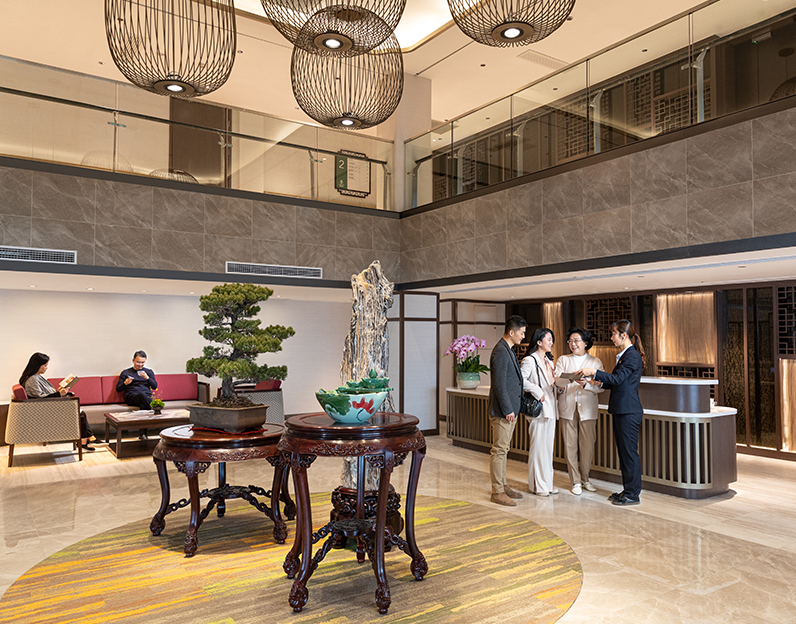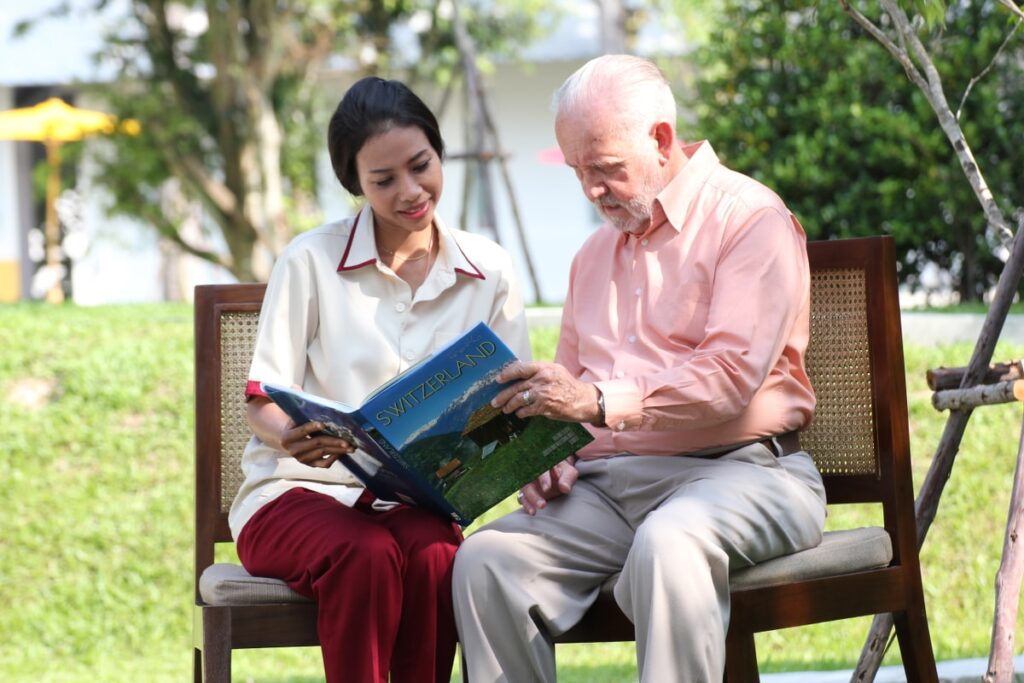Introduction
In the realm of aged care and longevity, the focus has long been on simply extending lifespan. But now the emphasis is shifting: it’s not just about living longer — it’s about living better for longer. The recent report from the McKinsey Health Institute (MHI) titled “Healthspan science may enable healthier lives for all”, co-authored by Dr Lars Hartenstein, draws our attention to “healthspan” — the period of life spent in good health, free from serious disease or disability. McKinsey & Company Healthy Longevity
For aged-care practitioners, policy makers, and those passionate about longevity — including in Asia’s rapidly ageing societies — this is a timely and important reframing.
(The full webinar is worth viewing for extra depth.)
Why does healthspan matter in aged care?
- Global demographic shift – By 2040, nearly 15 % of the global population will be aged 65 and over. By 2080, people aged 65 and over will outnumber children under 18. For Asia in particular, many countries face this demographic transition even sooner.
- Disease burden – Age-related diseases (cancers, neuro-degeneration, musculoskeletal conditions) account for over 600 million disability-adjusted life years (DALYs) annually. If interventions shifted half of that burden, the economic impact could be in the order of US$2 trillion in GDP uplift.
- Beyond longevity to quality – Simply adding years of life is insufficient if those years are spent with poor health or disability. The MHI emphasises the importance of “adding life to years, and years in good health”.
- Relevance for aged-care services – For providers, this means that opportunities lie not only in providing care for frailty and disease, but in helping shift upstream: preventive strategies, health-optimisation, “ageing well” models.
The Seven Shifts MHI identifies
Dr Hartenstein and colleagues argue that accelerating progress in healthspan science — especially biomedical innovation addressing the biology of ageing — will require change across seven dimensions. Longevity.Technology Below is a summary of each shift with commentary relevant to aged-care in Asia.
- Field definition and perception
The term “healthspan” must be clearly defined and framed, distinguishing it from lifespan, longevity, healthy ageing and geroscience. Without a clear narrative, the field risks being sidetracked into less rigorous territory. Longevity.Technology
Implication for aged care: Helps aged-care organisations articulate a shift from “managing decline” to “supporting thriving older adults”. - Fundamental understanding of ageing biology
Better global coordination of research, data collection (multi-omics, longitudinal cohorts), and advanced tools (AI/ML) is needed to understand the underlying ageing processes.
Implication: Aged-care settings can connect with research networks, support biomarker studies or longitudinal follow-up of older clients. - Biomarker consensus
There’s a need to agree on surrogate endpoints (biomarkers) for trials so that ageing interventions can be measured. Without them, translation to practice is harder.
Implication: For aged-care in Asia, exploring clinical partnerships that validate biomarkers in diverse ethnic populations will be valuable. - Translation and clinical development
The challenge: many ageing-biology targets have not yet progressed through robust clinical trials. Innovative trial design, reverse translation (from human to lab) and greater pharma/biotech involvement are needed.
Implication: Aged-care providers and academic institutions could serve as trial-sites or observational cohorts to build this evidence base. - Regulatory pathways
Existing drug/regulation frameworks may not be fully suited to ageing-interventions. Early dialogue with regulators and new approval pathways may be required.
Implication: In Asia, regulatory bodies will need to adapt — aged-care stakeholders should engage in policy discussion to ensure inclusion of older populations. - Derisked investment
To attract large-scale investment, the field must reduce risk: blended finance (philanthropy + venture + public sector), clearer commercial models, realistic endpoints.
Implication: In Asia’s aged-care market, innovative business models (prevention, longevity services) will need investors comfortable with longer horizons. - Evidence-based practice and talent
As the field matures, more clinicians, researchers and health-systems must be trained in “healthspan science”. The talent pipeline matters.
Implication: Aged-care workforce development in Asia should include modules on longevity, geroscience and functional health maintenance.
What this means for Asia’s aged-care sector
- Preventive paradigm shift: Beyond the usual focus on managing chronic conditions in older adults, there’s a growing opportunity for aged-care providers to emphasise upstream interventions: nutrition, exercise, stress-management, social engagement — all of which support healthspan. The MHI report reminds that biomedical tools are complementary to these lifestyle/environment drivers.
- Regional collaboration: Countries in South-East Asia already face rapid ageing and resource constraints. Taking a cross-sector, cross-national approach (governments, universities, aged-care providers, biotech) can accelerate progress.
- Cultural adaptation: Longevity science must respect cultural context: in Asia, inter-generational living, community engagement, traditional health practices all matter. A healthspan agenda must be inclusive of these.
- Investment in new models: There’s room for preventive aged-care programmes, longevity-clinics, data platforms tracking older adult health trajectories. But these need new funding models and regulatory frameworks.
- Workforce and training: Nurses, allied-health, aged-care staff need training in longevity concepts, biomarkers, and functional health optimisation — not just disease management.
- Equity and access: Healthspan science must avoid creating disparity where only wealthy older adults benefit. For Asia’s aged-care sector, ensuring innovation benefits all communities (urban + rural) will be essential.
Practical take-aways for you as a health professional in aged-care
- Familiarise yourself with the concept of “healthspan” (not just lifespan) and communicate this with older clients/residents.
- Stay abreast of emerging biomarkers and trials in geroscience — even if they’re not yet mainstream, they signal future directions.
- Advocate for data collection in your setting: simple functional health metrics, longitudinal tracking of older people’s mobility, cognition, social engagement — these build evidence.
- Consider partnerships: your aged-care service could collaborate with research institutions in Asia to participate in longevity-oriented cohorts.
- Emphasise lifestyle interventions: For now, the strongest evidence remains around nutrition, physical activity, sleep, social connectivity — these remain foundational. The MHI report emphasises that biomedical tools should not detract from lifestyle/environmental drivers.
- Engage in policy conversation: At local/regional levels, aged-care providers can inform regulators and funders about what healthspan-oriented services look like, and help shape frameworks for inclusion.
Conclusion
For those of us working in ageing, longevity and sized-for-purpose aged-care in Asia, the “healthspan” concept ushered in by the MHI report offers both a challenge and an opportunity. It means looking beyond simply adding years to life, to enhancing the quality of those years. It means cross-sector collaboration — biotech, academia, regulators, providers, investors — not just siloed ageing-care services. And it means starting now.
As Dr Hartenstein reminds us, the real question is: what kind of coalition can we form? longevity.technology In Asia, where ageing is accelerating, the aged-care sector is uniquely positioned to lead such a coalition. Let’s embrace the shift from “keeping people alive” to “helping people thrive”.
From Accelerating Healthspan Science: Seven Shifts and a Cross-Sector Agenda Dr. Hartenstein (Dr. Lars Hartenstein, Director of the Healthy Longevity McKinsey Health Institute)


